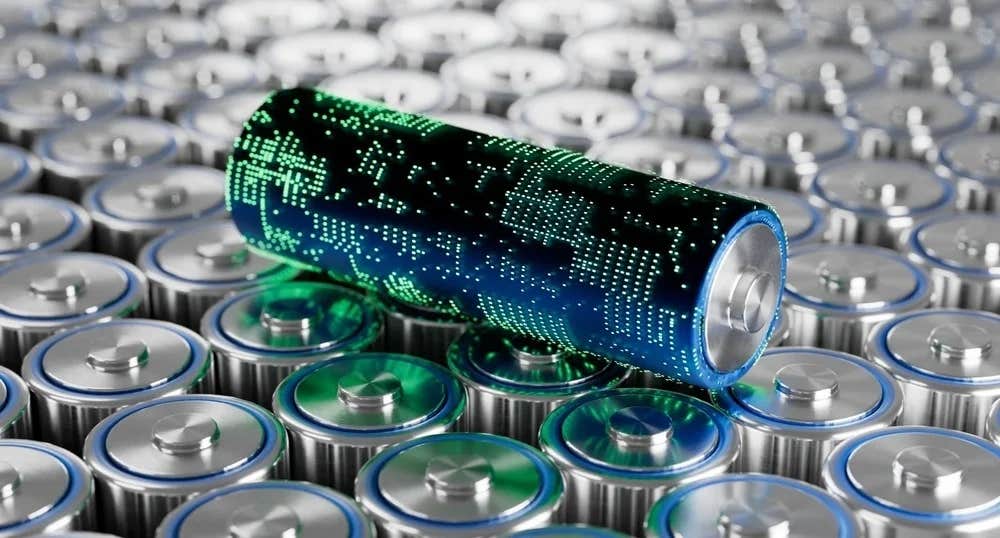Cutting-edge battery design: More power, lower environmental impact
This improvement could double the travel range of electric cars on a single charge and extend the time between recharges for smartphones.

Lithium metal batteries can hold at least twice the energy per unit volume compared to the widely used lithium-ion batteries. (CREDIT: Creative Commons)
Lithium metal batteries are seen as a key advancement for the next generation of high-energy storage. These batteries can hold at least twice the energy per unit volume compared to the widely used lithium-ion batteries. This improvement could double the travel range of electric cars on a single charge and extend the time between recharges for smartphones.
However, a significant challenge persists: the liquid electrolyte in lithium metal batteries requires large amounts of fluorinated solvents and salts, which increase their environmental impact. Without these fluorine additives, the batteries would become unstable, fail after a few charging cycles, and risk short circuits, overheating, and potential fires.
Maria Lukatskaya, a professor at ETH Zurich, leads a research team that has developed a method to significantly reduce the fluorine needed in these batteries. This innovation aims to make them more environmentally friendly, stable, and cost-effective.
The fluorinated compounds in the electrolyte help form a protective layer around the lithium at the battery's negative electrode. "This protective layer can be compared to the enamel of a tooth," Lukatskaya explains. "It protects the metallic lithium from continuous reaction with electrolyte components." Without this layer, the electrolyte would deplete quickly, causing the cell to fail. Moreover, the lack of a stable layer would result in the formation of lithium metal whiskers, or dendrites, during recharging, rather than a smooth layer.
These dendrites pose a serious risk. If they touch the positive electrode, they can cause a short circuit, potentially leading to the battery overheating and igniting. Therefore, controlling the properties of this protective layer is crucial for the battery's performance, safety, and lifespan.
"The question was how to reduce the amount of added fluorine without compromising the protective layer’s stability," says Nathan Hong, a doctoral student on the team. Their new method uses electrostatic attraction to achieve this goal. Electrically charged fluorinated molecules act as carriers, delivering the fluorine to the protective layer. This technique reduces the fluorine content in the liquid electrolyte to just 0.1 percent by weight, at least 20 times lower than previous methods.
Greener and More Efficient Batteries
The research, detailed in a paper published in Energy & Environmental Science, has also led to a patent application. One major challenge was identifying a suitable molecule to carry the fluorine and decompose under the right conditions once it reached the lithium metal. A significant advantage of this method is its compatibility with existing battery production processes, requiring no additional costs to modify the production setup.
The team tested their method on coin-sized batteries in the lab. Their next step is to scale up the method for use in pouch cells, similar to those found in smartphones.
This innovation from ETH Zurich's team represents a significant step towards more sustainable and efficient energy storage solutions. By reducing the environmental impact of lithium metal batteries, they bring us closer to a future where high-energy batteries are both powerful and eco-friendly.
Note: Materials provided above by the The Brighter Side of News. Content may be edited for style and length.
Like these kind of feel good stories? Get the Brighter Side of News' newsletter.
Joshua Shavit
Science & Technology Writer | AI and Robotics Reporter
Joshua Shavit is a Los Angeles-based science and technology writer with a passion for exploring the breakthroughs shaping the future. As a contributor to The Brighter Side of News, he focuses on positive and transformative advancements in AI, technology, physics, engineering, robotics and space science. Joshua is currently working towards a Bachelor of Science in Business Administration at the University of California, Berkeley. He combines his academic background with a talent for storytelling, making complex scientific discoveries engaging and accessible. His work highlights the innovators behind the ideas, bringing readers closer to the people driving progress.



